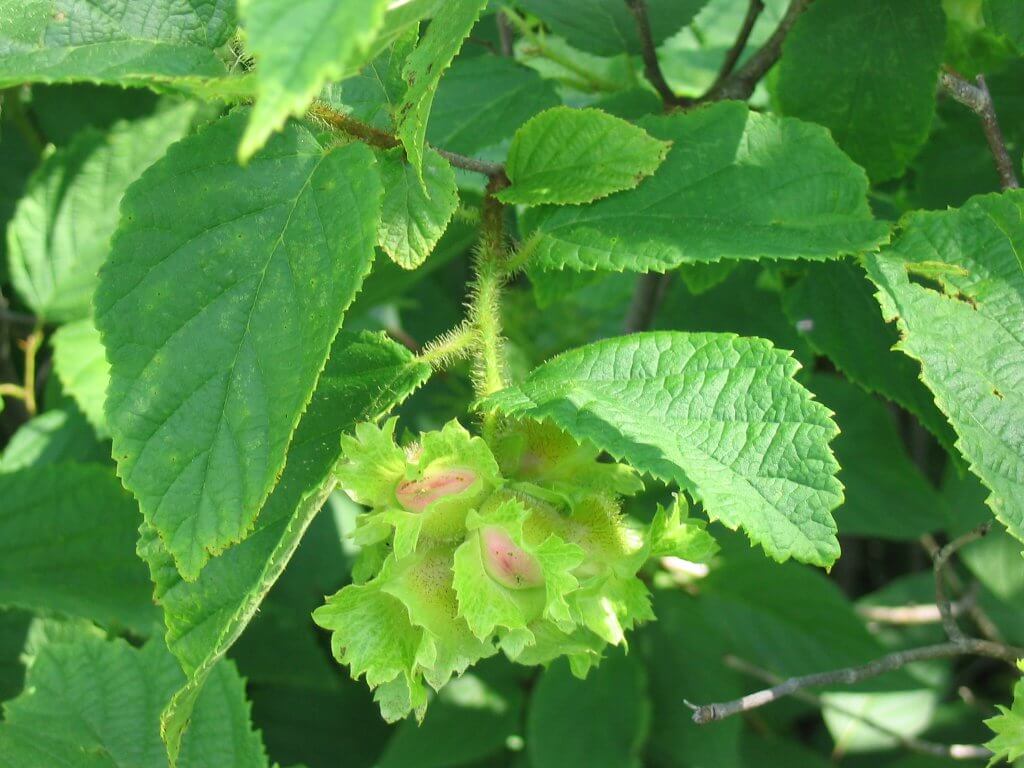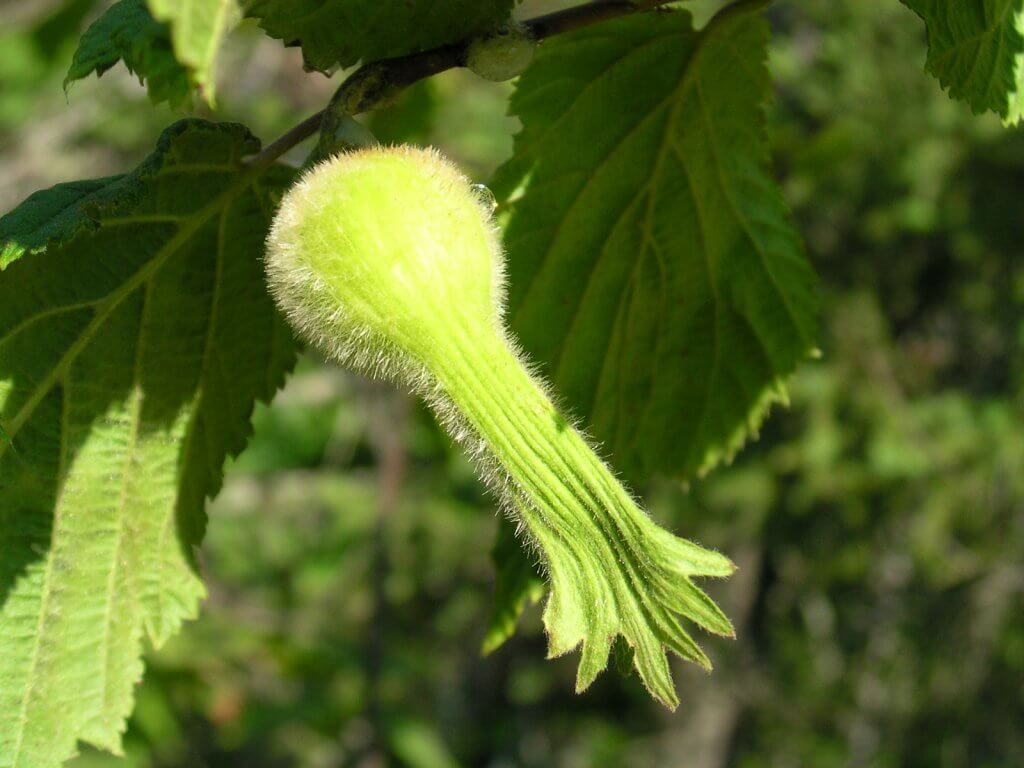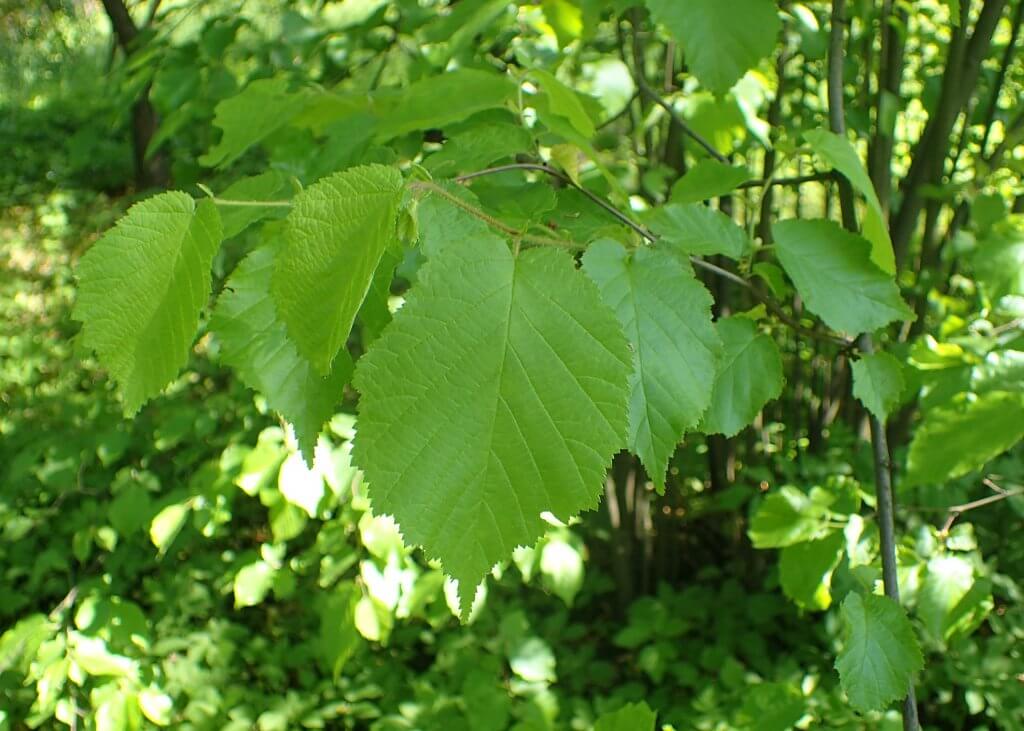Hazelnuts (Corylus spp.) are the familiar produce of the hazel shrub. A deciduous plant that is native to southeast Canada and the Eastern US states. Two species can be found here, those being the beaked hazelnut (Corylus cornuta) and the American hazelnut (Corylus americana). The latter has the widest range, reaching across the midwestern states as far west as Oklahoma and Kansas.
You’ll find both hazel species thriving in well drained, loamy soils and in an area where they can receive full sun. As a shorter shrub, they grow best within forest and wooded areas amongst trees that are not too densely packed so as to allow plenty of sunlight through.
They tend to grow to heights of around 10-15 feet, forming a short tree or dense shrub shape with multiple stems. The leaves are oval shaped with a lightly serrated edge. Small male catkins and clusters of female flowers form in the spring. The nut, or fruit, forms in a long beak like husk in the beaked hazelnut. The American hazelnuts are enclosed instead in serrated leafy sheaths.

Edible parts and other uses
Only the nuts of the hazel are considered edible. They are smaller than those you can buy commercially, but the task of foraging your own makes them all the more sweeter.
Sweet desserts, hazelnut flavored breads, home made granola; The are a huge number of ways to utilise hazelnuts in the kitchen. You can also just enjoy them as a simple snack, roasted or raw.
Cautions

The tree and nut husks are very easy to identify, so collecting the nuts is considered very safe for someone new to foraging. However as a nut, they should be avoided if you have a nut allergy.
Foraging
Look for hazelnut shrubs in clusters within open woodlands and forest edges. To produce a good yield of nuts they require a lot of sun, so shaded hazels are not likely to produce a great crop. They do not survive well in dry areas, so stick to areas of rich but well draining soil.
The leafy husks (involucres) that enclose the nuts can be hidden underneath leaves, so they will not be immediately obvious. Each husk can contain anywhere from 1-10 nuts, but 1-3 is a more common range to expect.
The best time to harvest hazelnuts is early autumn, before the involucre starts to brown. The short stature of the tree and low growing stems should mean that most of the nuts are easy to reach.
Drying the outer involucre before removing the nut inside will help with easier removal. So leave them out in the sun for a day or two before removing. For long term storage remove the outer involucre and allow the nut to dry in its shell for about a week before sealing in an air tight container.

Did you know…
Native Americans utilised as much of a hazelnut shrub as possible, using the nuts as a source of food and medicine, and the wood as building material. Baskets, storage and housing could be created using the young stems that grow and radiate from the trunk. The use of fire to cultivate and encourage hazelnut growth has also been recorded. As a relatively fast growing tree the underground shoots can regrow and produce hazelnuts in only 4 years after a forest fire.
Conclusion
A favorite of many avid foragers, the hazelnut is a fantastic local edible to harvest. It is packed full of proteins, healthy fats and of course that instantly recognisable and delicious flavor. So commonly available in flavored supermarket products, it is uncommon for many people to forage and cook with their own supply of hazelnuts. However this is slowly beginning to change as more people begin to understand and appreciate their locally available wild edibles.
—————Written by Hannah Sweet
Hannah is a freelance writer and graphic designer from the UK. With a penchant for travelling, photography and all things botanical, she enjoys writing about a wealth of topics and issues, from conservation and slow living, to design and travel. Learn more about her writing and design services at www.sweetmeanders.co
Many of our readers find that subscribing to Eat The Planet is the best way to make sure they don't miss any of our valuable information about wild edibles.
See our privacy policy for more information about ads on this site






